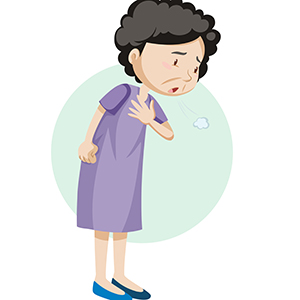Acute effect of oxygen therapy on exercise tolerance and dyspnea perception in ILD patients

Submitted: May 12, 2021
Accepted: September 6, 2021
Published: October 11, 2021
Accepted: September 6, 2021
Abstract Views: 1526
PDF: 723
Publisher's note
All claims expressed in this article are solely those of the authors and do not necessarily represent those of their affiliated organizations, or those of the publisher, the editors and the reviewers. Any product that may be evaluated in this article or claim that may be made by its manufacturer is not guaranteed or endorsed by the publisher.
All claims expressed in this article are solely those of the authors and do not necessarily represent those of their affiliated organizations, or those of the publisher, the editors and the reviewers. Any product that may be evaluated in this article or claim that may be made by its manufacturer is not guaranteed or endorsed by the publisher.
Similar Articles
- Alice Biffi, Giulia Dei, Federica De Giacomi, Anna Stainer, Lorenzo Olmo Parma, Maria Rosa Pozzi, Paola Faverio, Alberto Pesci, Non-specific interstitial pneumonia and features of connective tissue disease: What are the consequences of a different point of view? , Monaldi Archives for Chest Disease: Vol. 88 No. 3 (2018)
- M. Justine, F. Tahirah, V. Mohan, Health-related quality of life, lung function and dyspnea rating in COPD patients , Monaldi Archives for Chest Disease: Vol. 79 No. 3-4 (2013): Pulmonary series
- G.L. Casoni, C. Gurioli, P.N. Chhajed, M. Chilosi, M. Zompatori, D. Olivieri, V. Poletti, The value of transbronchial lung biopsy using jumbo forceps via rigid bronchoscope in diffuse lung disease , Monaldi Archives for Chest Disease: Vol. 69 No. 2 (2008): Pulmonary series
- E.A. Renzoni, Interstitial lung disease in systemic sclerosis , Monaldi Archives for Chest Disease: Vol. 67 No. 4 (2007): Pulmonary series
- Paolo Ruggeri, Federica Lo Bello, Francesco Nucera, Michele Gaeta, Francesco Monaco, Gaetano Caramori, Giuseppe Girbino, Hereditary hyperhomocysteinemia associated with nephrotic syndrome complicated by artery thrombosis and chronic thromboembolic pulmonary hypertension: A case report , Monaldi Archives for Chest Disease: Vol. 87 No. 3 (2017)
- S.M. Mirsaeidi, P. Tabarsi, A. Mardanloo, G. Ebrahimi, M. Amiri, P. Farnia, M. Sheikhleslami, V. Bakayev, F. Mohammadi, S.D. Mansouri, M.R. Masjedi, A.A. Velayati, Pulmonary Mycobacterium Simiae infection and HTLV1 infection: an incidental co-infection or a predisposing factor? , Monaldi Archives for Chest Disease: Vol. 65 No. 2 (2006): Pulmonary series
- M. Malerba, B. Ragnoli, M. Corradi, Non-invasive methods to assess biomarkers of exposure and early stage of pulmonary disease in smoking subjects , Monaldi Archives for Chest Disease: Vol. 69 No. 3 (2008): Pulmonary series
- P. Pirina, M. Budroni, S. Esposito, S. Ostera, M.F. Polo, L. Santoru, G. Madeddu, A.G. Fois, G.C. Ginesu, G. Padua, F. Tanda, F. Ginesu, Cytological and histological diagnosis of lung cancer in Sardinia and Italy in the 1990s , Monaldi Archives for Chest Disease: Vol. 67 No. 4 (2007): Pulmonary series
- William Newmarch, Angelica Puopolo, Madina Weiler, Brian Casserly, Hamman-Rich syndrome: a forgotten entity , Monaldi Archives for Chest Disease: Vol. 87 No. 1 (2017)
- Elio Gorga, Marta Scodro, Francesca Valentini, Renzo D'Ortona, Mariachiara Arisi, Edoardo Sciatti, Ivano Bonadei, Valentina Regazzoni, Enrico Vizzardi, Marco Metra, Piergiacomo Calzavara Pinton, Echocardiographic evaluation of diastolic dysfunction in young and healthy patients with psoriasis: A case-control study , Monaldi Archives for Chest Disease: Vol. 88 No. 3 (2018)
You may also start an advanced similarity search for this article.

 https://doi.org/10.4081/monaldi.2021.1925
https://doi.org/10.4081/monaldi.2021.1925





